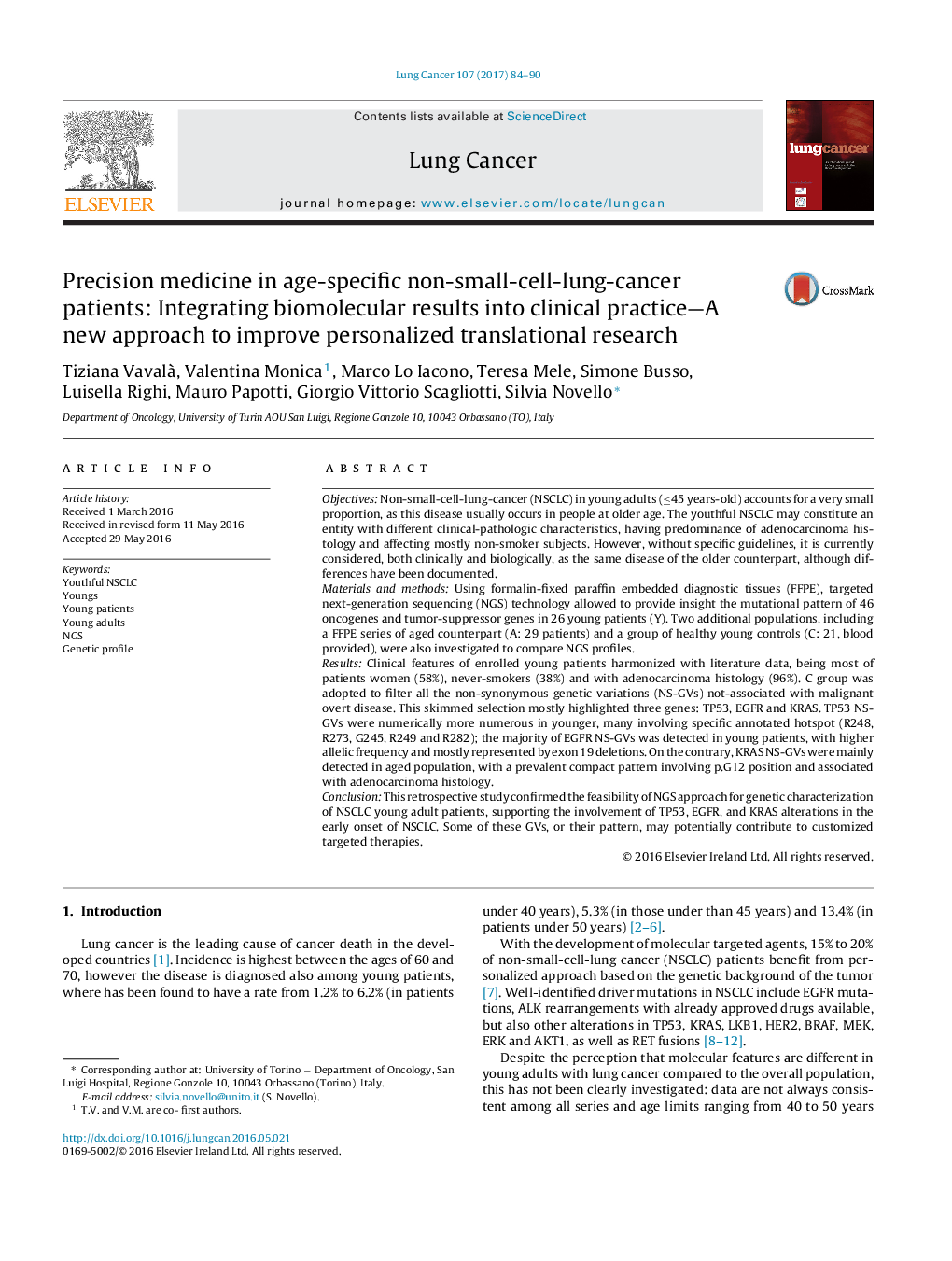| Article ID | Journal | Published Year | Pages | File Type |
|---|---|---|---|---|
| 5528108 | Lung Cancer | 2017 | 7 Pages |
â¢The youthful lung cancer may constitute a different clinical-pathologic entity.â¢Nowadays, patients younger than 40 years are treated similarly to oldest ones.â¢NGS approach allows for a genetic characterization of NSCLC young adult patients.â¢Genetic profiles among young and old patients and the healthy cohort were analyzed.â¢TP53, EGFR,KRAS alterations may be involved in early onset of youthful lung cancer.
ObjectivesNon-small-cell-lung-cancer (NSCLC) in young adults (â¤45 years-old) accounts for a very small proportion, as this disease usually occurs in people at older age. The youthful NSCLC may constitute an entity with different clinical-pathologic characteristics, having predominance of adenocarcinoma histology and affecting mostly non-smoker subjects. However, without specific guidelines, it is currently considered, both clinically and biologically, as the same disease of the older counterpart, although differences have been documented.Materials and methodsUsing formalin-fixed paraffin embedded diagnostic tissues (FFPE), targeted next-generation sequencing (NGS) technology allowed to provide insight the mutational pattern of 46 oncogenes and tumor-suppressor genes in 26 young patients (Y). Two additional populations, including a FFPE series of aged counterpart (A: 29 patients) and a group of healthy young controls (C: 21, blood provided), were also investigated to compare NGS profiles.ResultsClinical features of enrolled young patients harmonized with literature data, being most of patients women (58%), never-smokers (38%) and with adenocarcinoma histology (96%). C group was adopted to filter all the non-synonymous genetic variations (NS-GVs) not-associated with malignant overt disease. This skimmed selection mostly highlighted three genes: TP53, EGFR and KRAS. TP53 NS-GVs were numerically more numerous in younger, many involving specific annotated hotspot (R248, R273, G245, R249 and R282); the majority of EGFR NS-GVs was detected in young patients, with higher allelic frequency and mostly represented by exon 19 deletions. On the contrary, KRAS NS-GVs were mainly detected in aged population, with a prevalent compact pattern involving p.G12 position and associated with adenocarcinoma histology.ConclusionThis retrospective study confirmed the feasibility of NGS approach for genetic characterization of NSCLC young adult patients, supporting the involvement of TP53, EGFR, and KRAS alterations in the early onset of NSCLC. Some of these GVs, or their pattern, may potentially contribute to customized targeted therapies.
